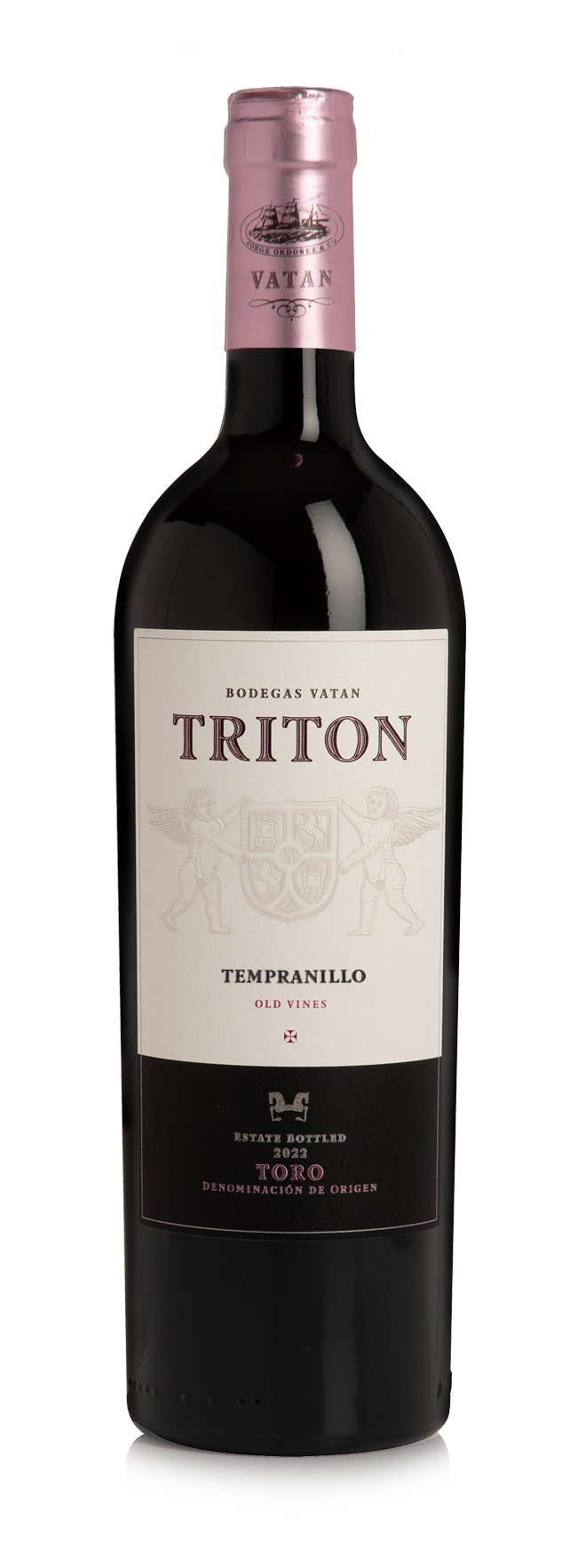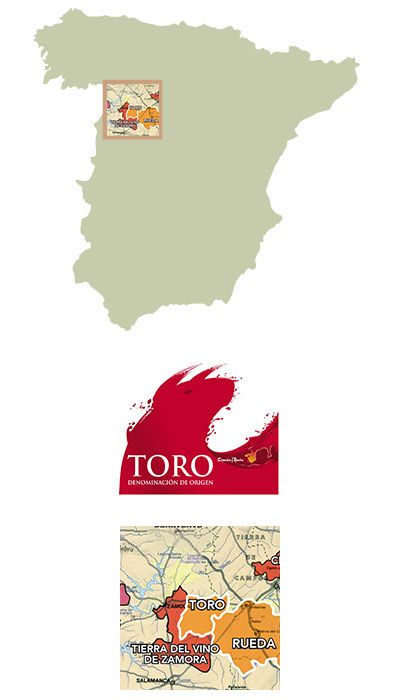Bodegas Vatan
Triton Tinta de Toro




Downloads
Bottleshot - 2017-JebDunnuck-Shelftalker.pdf - 2018-Vinous-Shelftalker.pdf - 2019-GuiaPenin-Shelftalker.pdf - 2019-JamesSuckling-Shelftalker.pdf - 2019-JebDunnuck-Shelftalker.pdf - 2021-JamesSuckling-Shelftalker.pdf - 2022-JebDunnuck-Shelftalker.pdf - 2022-Vinous-Shelftalker.pdf - 2023-JebDunnuck-Shelftalker.pdf - Triton Sellsheet.pdf - WineEnthusiast-2021-scorecard.pdf2023 Vintage
92pts

2023 Vintage
92pts

2022 Vintage
93pts

Denominacion de Origen
D.O. Toro
Location
Villafranca, Villabuena, Toro, Morales de Toro, Villaester
Varietal
100% Tinta de Toro
Vineyards
Collection of 9 vineyard sights located in Villafranca, Villabuena, Toro, Morales de Toro, Villaester averaging 1.95 Ha. per lot.
Year(s) Planted
Oldest vines planted in 1900, youngest planted in 1970, average vine planted in 1933 or 79 years old
Viticulture
Traditional dry farmed viticulture. Practicing organic gobelet (vaso) trained vines, cultivated completely by hand.
Soils
Sandy loam of sedimentary origins dated back to the end of the Cretaceous period. These are the oldest soils in the Spanish Duero River valley. Many of the soils have an important component of iron. Two to three meters below the surface, there is a 25 cm thick layer of red clay. Due to these sandy soils, Toro was the only continental Spanish DO to completely resist phylloxera. Bodegas Ordóñez exclusively works with ungrafted vineyards, as a result.
Climate
Continental steppe climate, with drastic temperature swings between day and night. The climate is also very dry – annual rainfall levels reach 350 L/M2.
Winemaking
Sorting is followed by destemming without crushing. The whole berries are transferred to 5,000L open top stainless-steel and polymer vats. Fermentation is started with a pied de cuve, and maceration lasts between six and eight days, no more. The wine is pressed in a vertical basket & pneumatic press for eight to twelve hours and is transferred immediately to second through fourth use barriques.
Aging
The primary fermentation finishes in barrique and malolactic starts spontaneously. The wine rests in barrel for 12 months.
Comments
Triton Tinta de Toro is a youthful expression of the oldest clone of Tempranillo in Spain - indigenous to the only Spanish D.O. that resisted phylloxera. During the Middle Ages, Toro was Spain's most famous red winemaking region, and was mentioned in literature by Alfonso IX (King of León, 12th c.), Juan Ruiz the Archpriest of Hita, Quevedo, Luis de Góngora, and Miguel de Cervantes. These wines also accompanied Spanish explorers to the new world. D.O. Toro was resuscitated in 1997 by Bodega Numanthia-Termes, founded by Jorge Ordóñez and the Eguren family.